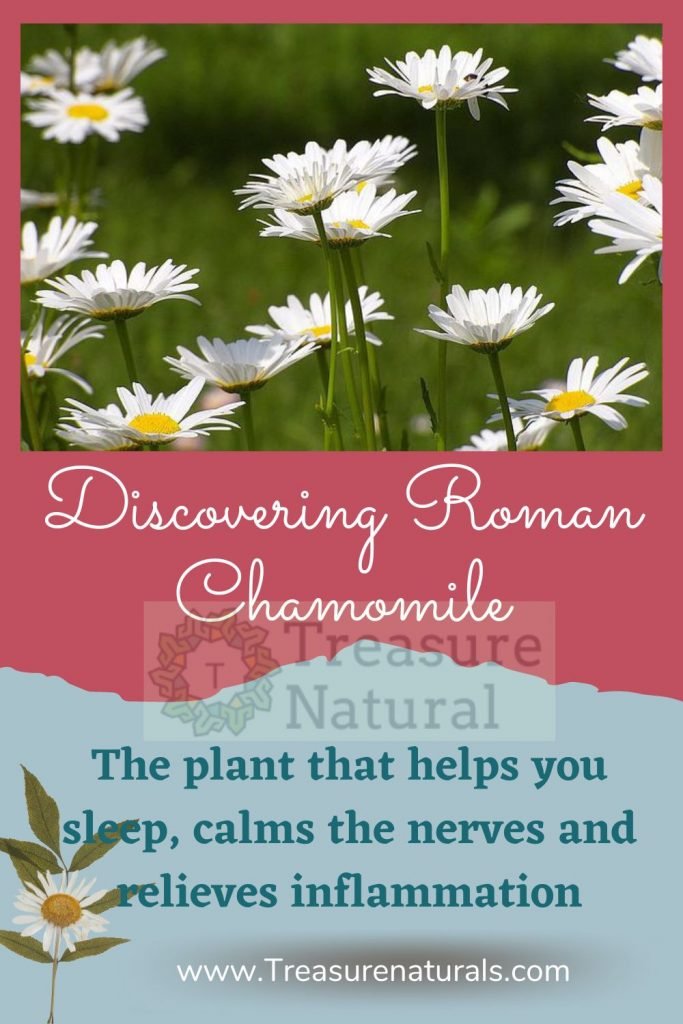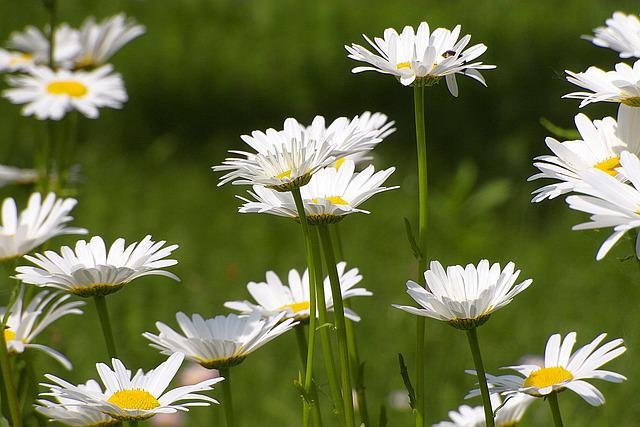
Roman or noble chamomile, also known as English chamomile, is one of several variations of the chamomile plant. Among the medicinal herbs it is the most used in the Western world. It has relaxing properties and calming effects on the digestive system.
Roman chamomile, what does it look like
It is a herbaceous plant belonging to the Asteraceae family. From the botanical name of Chamaemelum nobile, it is recognized by the typically branched stem and pointed leaves, divided into short and thin lobes.
The flowers are different from the well-known ones of chamomile: in the shape of a small balloon with several rows of thin white petals surrounding a disk of small yellow tubular flowers. They are pleasantly aromatic, without being too intrusive.
The plant can reach a maximum of 40 cm in height.
Cultivation and production of Roman Chamomile
It is easily found in temperate regions of Europe, especially in France. The most popular quality is grown in the Anjou region.
Le Maine-et-Loire, in eighth place among the French departments for areas dedicated to aromatic plants, holds almost the exclusivity, allocating about ninety hectares.
It does not grow at excessive altitudes and prefers soils rich in silica. It can grow very well on loose, well-drained and sandy soils. It loves particularly sunny places and does not tolerate drafts or too strong winds. The flowers fear the humidity of the night hours.
It requires a good number of irrigations, which must be carried out above all before flowering or, at most, after the collection of the flower heads.
It is grown for its multiple properties and essential oils. It is hardly found in the wild.
Roman chamomile: etymology
The Greek term Anthemis means ‘little flower’. In the English-speaking world it is also known as English camomile.
The adjectives “Roman” and “noble” have nothing to do with the place of origin of the plant. These attributes enhance the virtues of its superior quality compared to common chamomile.
Properties of Roman Chamomile
The flower heads are collected and dried. They contain essential oils, polyphenols, coumarins, fatty acids and phytosterols.
Here are its main beneficial properties of this which may be rightly considered the most famous of the relaxing herbs:
- It calms the nerves, promotes sleep and also improves sleep quality. An animal study found that it reduces the time it takes to fall asleep.
- Digestive and antispasmodic. An infusion of Roman chamomile helps in cases of congestion, stomach pain, swollen stomach and chronic gastritis
- Disinfectant, anti-inflammatory and antibacterial. It can be used externally to disinfect wounds and as a mouthwash. The infusion packs to be applied to the eyes in case of conjunctivitis and eye irritation are also beneficial.
- Very strong antioxidant, strengthens the immune system
- Useful in case of colitis and joint pain. Rub the painful area with oil: it is an excellent remedy for joint pain, neuralgia and colitis
- Calm skin inflammations. Roman chamomile essential oil relieves itching in case of irritation, hives, rashes, burns, red skin.
How to use Roman Chamomile
This plant is commonly consumed in the form of:
- Tea or infusion
- Essential oil
- Dried powder
- Dyeing
- Capsules
- Pads
- Cream
The power and benefits of one of the best known medicinal plants depend on many factors: the form in which it is used, whether the product is organic and how pure it is.
The more potent form is the dry powder, the less potent is the infusion.
Some tips for using Roman Chamomile
- If you buy the powder, we recommend the kind extracted from the leaves, where the oil is found. Avoid selections with stems, roots or other fillers.
- The infusion can be found in almost all grocery stores, but not all brands are the same in power and quality. Always check the date on the package: it quickly loses its properties.
- To be sure of a pure and effective product, it is best to buy the organic one.
- Apigenin, one of the antioxidants of chamomile, should be present in the extracts in a concentration of 1.2%.
- Chamomile essential oil is not intended for internal use, it should be used locally or spread in the air.
- Before applying chamomile oil to large areas, do a patch test by placing a small amount on an area of the skin and then watch for any reaction.
Dosage of Roman Chamomile
Always read the information for the doses on the label and, if necessary, consult a doctor or herbalist.
In general, guidelines for benefiting from this plant vary by age.
Children and Roman Chamomile
Never give any chamomile product to an infant or child.
Adults and Roman Chamomile: doses
- Infusion: 2 or 3 heaping teaspoons of loose tea in boiling water. Drink three to four times a day between meals.
- Bathtub: 5 to 10 drops of essential oil in a tub of water to help heal cuts and wounds, treat eczema or other skin ailments.
- Topical use: concentration between 3 and 10% of chamomile cream or ointment.
- Capsules: 400 to 1600 mg in divided doses per day.
- Tincture: 15 ml 3-4 times a day.
Contraindications of Roman Chamomile

While it boasts numerous benefits and is considered a safe herb in most cases, side effects and contraindications cannot be ruled out.
Let’s see what are the cases in which the assumption is to be avoided or, at least, to be limited.
- In excessive doses it can cause nausea or vomiting.
- Used directly on the skin for topical use, it can cause redness and itching.
- Allergy: ragweed, chrysanthemum, daisy, belong to the same family, and are to be avoided in case of allergy
- People with asthma should consult their doctor before using it.
- Avoid during pregnancy as it can cause mild uterine stimulation.
- Do not give to children
Drug interactions
Avoid taking Roman chamomile if you are taking the following types of medications:
- anticoagulants (such as Coumadin) and aspirin, because chamomile can increase the risk of bleeding
- narcotics, barbiturates, alcohol, some types of antidepressants or benzodiazepines
- estrogen and birth control pills
- antihypertensives, since they can cause a slight drop in blood pressure
- diabetes medicines (such as insulin) as it can lower blood sugar levels
- drugs that are broken down in the liver (such as Fexofenadine)
- medications for insomnia
- other sedative-type herbs, such as valerian and kava






